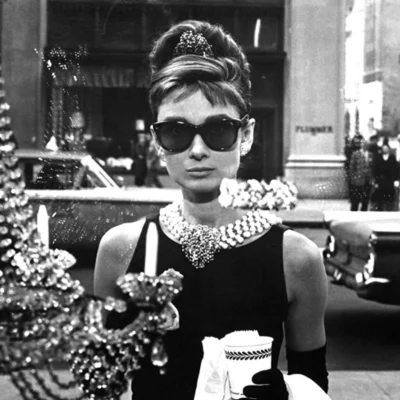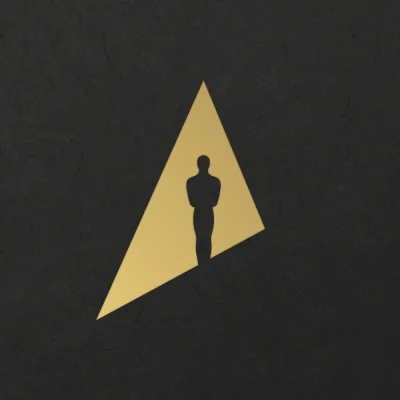
Greig Fraser, a two-time Oscar nominee, is the ASC Award-winning cinematographer of films like Zero Dark Thirty, Foxcatcher, Lion, Vice and Dune. His most recent work can be seen in Matt Reeves’ The Batman, currently playing in theaters. Fraser shares with A.frame the five movies that inspired him to make the leap from still photography to the moving image and the impact that they made on his formative years learning his craft in Australia.
Director: Lynne Ramsay
Director of Photography: Alwin H. Küchler
I was a photography student and, when I was in Melbourne, I joined a film production company. They were making commercials and had photographers there and filmmakers. I was looking at the filmmakers going, ‘Wow, this is where I’m going. This is where you’ve got teams of people making beautiful stuff. You’ve got directors and DPs and designers and it feels like everybody contributes to the final picture.’ So, I started diverting my attention of what I was ingesting, visually, and I started watching film after film after film after film. Because I didn’t have a film background, cranes and dollies and all that were really foreign to me. I didn’t understand. I could come up with a shot, but there was nothing I could latch onto that made me go, ‘I can really do this,’ because – every film that was out – the cameras were moving. But then I saw a film called Ratcatcher by Lynne Ramsay and Alwin Küchler, and it was like explosions in my cerebral cortex. I went, ‘Oh my God. I can do that. That’s incredible.’ It wasn't that it was so basic. It was just that it proved to me that you can tell a story – and should tell a story, actually – with a still image. When I say ‘should,’ it’s that you shouldn’t conceive a shot that’s moving. The movement should not give the shot beauty by itself. There were a lot of filmmakers at the local filmmaking school in Melbourne, and I didn’t feel like their shots were beautiful unto themselves. They were doing beautiful crane downs and movements, but I didn’t feel the beauty in the images individually. Therefore, I didn’t feel an emotion. But, when I saw Ratcatcher, every single frame that Alwin and Lynne put on screen, there was an emotionality to it. I responded to that. It was just mind-blowing. That was one of the first films that made me say, ‘I’ve got it. I know how to make movies. I’ve got this. And now I can divert my attention to figuring out how to move the camera.’
Director: Paul Thomas Anderson
Director of Photography: Robert Elswit
Cut to Magnolia. I went to the cinema to watch Magnolia and was like, ‘Whoa!’ It was a three-hour film. It was way more complicated than Ratcatcher. I didn’t know what I was watching, but I knew I loved it. So, I went back to the cinema the next day, after I had the time to ingest the ideas, and I watched it again. And then, I went again the following week. I think I went five, six, seven times to the theater to watch that film, because I knew that it was an absolute genius-level movie that combined character, images and movement. Paul Thomas Anderson and his movement of camera in that movie, along with Robert Elswit, I think it’s stunning. I think it is truly a masterpiece. It was an anomaly to me at the beginning because it was something that I wasn’t sure I liked, but I knew I had to see again. Every single time I’ve watched it, I’ve gotten more and more blown away. I still don’t know how the hell they did that. And I say that now with 20 years of experience: I don’t know how the hell they did that. That’s an amazing feat. So, I started to go, ‘OK, I’ve learned how to make an image. I’m learning how to move a camera. I’m learning how to work with actors. So, now…’

Director: Sofia Coppola
Director of Photography: Edward Lachman
There’s a whole era of filmmakers that came up from Los Angeles during that time that I was completely enamored with – Mike Mills, Roman Coppola, Sofia Coppola, Spike Jonze. I came from a little city called Melbourne, but it had the same spirit that it seemed like these people had in LA. I never looked at LA as a spirit town. I looked at LA as a machine. But I saw spirit in these filmmakers, and this particular film. It was such a beautifully told film. Again, it was combining music and visuals, and it was a different form of lighting to, say, Ratcatcher. And it was a different form of movement to, say, Magnolia. It didn’t have that aggressive masculinity. Magnolia has a real kind of balls-to-the-wall script that moves and changes. The Virgin Suicides was just this beautiful kind of ode that was deeply sad, but super pop as well.

Director: Jane Campion
Director of Photography: Stuart Dryburgh
When I watched The Piano, I was just absolutely gobsmacked by it. Where Jane Campion excels – and particularly with The Power of the Dog this year – is in creating a story or a world that is like getting into bed. It’s like you get on a couch with a blanket on. You become engrossed in this world that she’s creating. She’s very, very good at allowing space in her films, and that space is something that I learned to enjoy and like, as opposed to every second being told something else or doing something or moving to here or doing that. I felt like her space was often something that was really, really compelling. The reason why I feel like The Piano is important in my learning was because I watched that in 1999, 2000, which is the nexus of when I was learning as much as I could. And then, working with Jane less than 10 years later, I had been plying my trade in commercials and short films and I went from being an audience member who just likes to sit back and enjoy the moment, to being a cinematographer for whom a big part of the job was to drive things forward, drive a crew forward, get the shot done in a certain time, work with a schedule – to efficiently get the job done for the director. Working with Jane, first on The Water Diary, which is a short film, and then on Bright Star, I learned how to photograph a movie in the same way that I enjoyed movies in the first place. I learned that sometimes the best job that I could do as a cinematographer was to do nothing, to sit and observe, to listen, to not drive anything forward. There are two sides of our job as cinematographers. One is to convey and capture emotion. The other is to drive a set forward. So, I found a balance there, and the reason why it was so important was because everything I’d learned watching The Piano and then working with Jane was instrumental in my development as a cinematographer.

Director: Andrei Tarkovsky
Director of Photography: Georgi Rerberg
The Mirror was something that I thought was really interesting when I watched it because I was like, ‘This doesn’t have a story.’ I hadn’t heard anything about the film. I had watched all of Tarkovsky’s films with a beginning, middle and end, with a narrative, and this had this weird kind of flashback, flash-forward thing. Is it a dream? Is it reality? What does this mean? What does that mean? It became this kind of art piece. I had watched art installations and interpretive dance, a whole myriad of art that’s very lateral and very outside of the box of what you would deem “art.” I kind of went, ‘Wow, here’s a filmmaker who is using all the narrative tricks in the book.’ By the way, narrative tricks that I never learned about technically. I never learned about flashbacks in film school because I didn’t go to film school. It was super interesting and I loved it. It also really hones my appreciation of Soviet-era glass, the lenses in that film. I had heard reports that he was given a 3:1 ratio, basically, or a 2.5:1 ratio in his film stock. And coming from a short film world where we were using re-cans and we were using donated stock and we were using stock that we bought ourselves after having worked at the pinball parlor, to know that a filmmaker can make a work of art like that with a ratio of 2:1 or 3:1 or whatever it was, was hugely inspirational. It showed me that it’s not about big Hollywood budgets. It’s not about having all the time in the world. It’s not about being able to do thousands of takes. Creating film art is about making the right choices on the day and being super diligent about making sure that you’re not putting any ingredients into the soup that are going to corrupt it.




